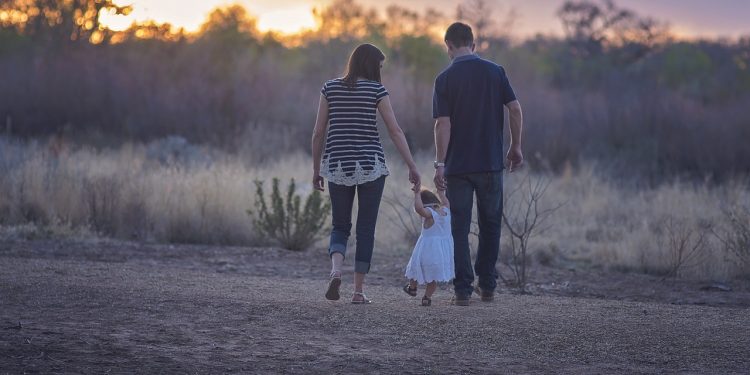Welcoming a new baby into the world is a beautiful, transformative experience. However, it also brings new responsibilities, including the desire to provide the best for your child while considering the impact on the environment. Living a sustainable lifestyle with a new baby can feel challenging, especially when there is so much focus on convenience and consumption. But taking small, intentional steps towards sustainability can make a significant difference for the health of your baby and the planet. By making thoughtful choices, new parents can create an eco-friendly home environment that supports both their growing family and the earth.
1. Choose Eco-Friendly Baby Products
The market for baby products is vast, and many conventional items contain harmful chemicals or are made from non-renewable resources. One of the easiest ways to live a more sustainable lifestyle is to opt for eco-friendly baby products that are safe for both your baby and the environment. From diapers to clothing, there are plenty of options available today that prioritize sustainability.
Consider using cloth diapers instead of disposable ones. Cloth diapers are reusable, reducing waste and minimizing the environmental impact. If cloth diapers aren’t for you, there are also biodegradable disposable diapers that decompose faster than traditional options. Similarly, choose organic cotton clothing for your baby, which is grown without the use of pesticides and is gentler on your baby’s sensitive skin.
You can also opt for natural and non-toxic baby toiletries, such as shampoos, lotions, and soaps. Many mainstream baby care products contain ingredients that can be harsh on a baby’s skin, so look for brands that are committed to using safe, plant-based ingredients. By making eco-conscious decisions when choosing baby products, you can provide a safe environment for your child while minimizing your impact on the earth.
2. Reduce, Reuse, and Share Baby Gear
Babies grow quickly, and as a result, many baby items are only used for a short period before being outgrown. Embracing the “reduce, reuse, recycle” philosophy can help you live more sustainably while also saving money. Instead of buying brand-new baby gear, consider borrowing, renting, or purchasing gently used items.
Look for second-hand baby clothes, strollers, cribs, and toys at local consignment shops, online marketplaces, or from friends and family. Not only does buying used help reduce the demand for new production, but it also prevents these items from ending up in landfills. If you do buy new, consider choosing items that can grow with your child, such as convertible cribs or adjustable highchairs that can be used for several years.
Sharing baby gear with friends or family members who are also new parents can further reduce waste and promote a sense of community. Babies often outgrow items before they are worn out, so sharing these items allows them to have a longer life cycle and reduces the need for constant consumption.
3. Breastfeed or Choose Sustainable Feeding Options
Breastfeeding is one of the most natural and sustainable ways to nourish your baby, as it requires no packaging, production, or transportation. If breastfeeding is an option for you, it can significantly reduce your family’s environmental footprint while providing optimal nutrition for your baby. However, not all mothers can or choose to breastfeed, and that’s okay—there are still ways to make feeding more sustainable.
If you use formula, consider choosing brands that prioritize sustainability in their production processes, such as those that use organic ingredients and recyclable packaging. Opt for glass bottles instead of plastic ones to reduce plastic waste, and invest in reusable nursing pads instead of disposable ones. Making conscious choices about feeding can help reduce your environmental impact while ensuring your baby gets the nutrition they need.
4. Create a Sustainable Nursery
Designing a nursery for your baby can be an exciting part of preparing for their arrival. To create a more sustainable nursery, start by choosing furniture made from sustainable materials, such as responsibly sourced wood. Look for non-toxic paints and finishes that don’t release harmful chemicals into the air, and choose eco-friendly bedding made from organic cotton or bamboo.
Consider the longevity of the items you buy—opt for furniture that can grow with your child or be repurposed later. For example, a changing table that can convert into a dresser or a crib that can transition into a toddler bed will last longer and reduce the need for new purchases in the future.
When it comes to decorating, focus on minimalism. Babies don’t need a lot of clutter, and a simpler, more intentional approach can create a calming environment for both you and your baby. Choose natural, safe toys, such as wooden rattles or fabric dolls, and avoid plastic items that may contain harmful chemicals. A sustainable nursery is not only better for the planet, but it also promotes a healthier space for your little one to grow and thrive.
5. Be Mindful of Waste and Embrace Minimalism
Babies can generate a lot of waste, from diapers to wipes to packaging from baby products. Being mindful of waste and finding ways to reduce it is an important part of living a sustainable lifestyle. Opt for reusable items whenever possible—cloth diapers, reusable baby wipes, and washable nursing pads are all excellent choices that help cut down on waste.
Embrace a minimalist mindset when it comes to baby gear and clothing. Babies grow quickly, and they don’t need a huge wardrobe or an abundance of toys. By focusing on the essentials and avoiding overconsumption, you can reduce waste and create a simpler, more organized home environment. Consider using hand-me-downs, purchasing second-hand, and borrowing items from friends and family to reduce the need for new products.
6. Choose Energy-Efficient and Eco-Friendly Household Practices
Raising a baby often means increased water and energy usage, whether it’s for washing bottles, doing laundry, or heating the nursery. Choosing energy-efficient appliances and being mindful of your household habits can help reduce your environmental impact. Consider washing baby clothes in cold water to save energy and using a clothesline to air-dry them instead of relying on a dryer.
Switch to LED light bulbs in your baby’s room to save energy, and use a programmable thermostat to regulate the temperature in the nursery efficiently. If you use disposable diapers, opt for biodegradable brands that break down more easily than traditional diapers. Simple changes in your daily routines can make a big difference over time and help you maintain a sustainable lifestyle as your family grows.
7. Teach Your Child About Sustainability from an Early Age
Creating a sustainable lifestyle with a new baby is about more than just the choices you make as a parent—it’s also about the values you instill in your child. By modeling sustainable behaviors from the beginning, you can help your child develop an appreciation for the environment and an understanding of the importance of protecting the planet.
Involve your child in sustainable practices as they grow. Show them how to care for plants, recycle, and reduce waste. Read books about nature and the environment, and spend time outdoors exploring the natural world. By fostering a love for nature and teaching your child about sustainability, you can help ensure that the next generation is even more conscious of their impact on the planet.













